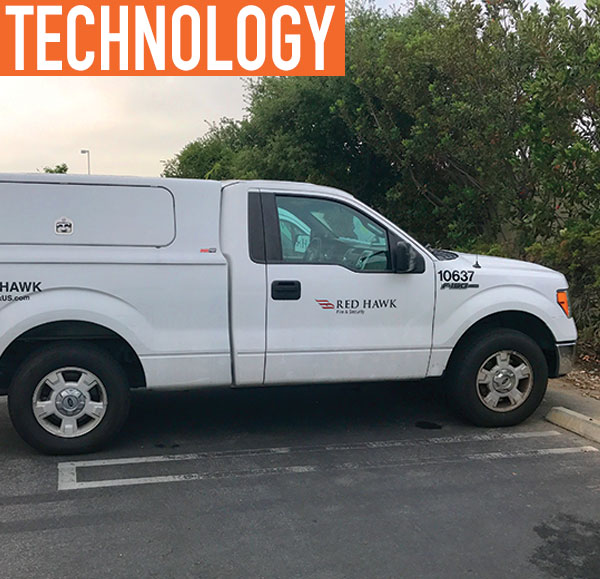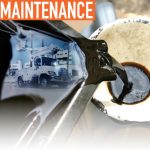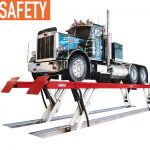In the eyes of his company’s executive team, Blair Schober is a fleet management genius. The US fleet manager for Red Hawk Fire & Security, which offers a full range of fire and security services to businesses across the country, Schober’s idea to implement a comprehensive driver safety program among his fleet of more than 850 vans, work trucks, and cars has saved the company millions of dollars.
With distracted driving and speeding being the most likely culprits, the costs to the company from preventable accidents that occurred in 2014 amounted to $2.6 million. That year, a preventable accident happened once every 227,000 miles driven.
“The frequency and severity of our accidents were costing the company way too much,” Schober says. “There was something inherently wrong with how our drivers handled themselves on the road and we had to make a change.”
They needed to be able to see what was happening in the field and then take corrective measures. In 2015, Red Hawk installed Geotab vehicle tracking systems into its vehicles and, toward the end of the year, rolled out a driver safety program through its fleet management company, ARI.
STUNNING RESULTS
The Red Hawk fleet has seen a substantial drop in the number of preventable accidents and the affiliated costs, even as it has grown significantly because of an acquisition.
In 2016, the fleet experienced one preventable accident per 281,000 miles—a 54,000-mile improvement in two years. And, he’s estimating just $200,000 in affiliated costs for 2017.
The significant cost savings has made his effort to implement the system all worth it.
“The initial investment was substantial, but we’ve seen a 700 percent return on the investment,” Schober says.
He says a lot of fleet managers have to work hard to get buy-in from their executive teams for anything fleet-related that would cost more money. Long seen as a necessary cost of doing business, fleet managers like Schober are showing that, with the proper implementation of technology, a fleet can, instead, have a positive impact on a company’s overall bottom line.
MAKE IT CONVINCING
Though he knew adopting a safety program would come with savings, there was no way to estimate just how much—and that makes it hard to convince the people who sign the checks. He was able to show how their insurance premiums would drop and also underscored the importance of investing in the safety of their employees.
Once leadership signed off on the idea, it took some time to win the drivers over, too. “There was some initial resistance to the telematics system at first. Some of our people saw it as Big Brother watching over them,” Schober says. “We told them that it’s our way of improving efficiency for our customers and making sure our employees return home to their friends and family safely every night. It’s not us taking a microscope to their driving habits, unless their actions require a deeper look.”
When Red Hawk launched the ARI Driver Excellence program, all drivers were given the same course of training modules, many of which were focused on speed, a reoccurring factor in the severity of Red Hawk’s accidents.
Now, a driver will be assigned a module based on behavior that is reflected in the telematics data delivered through the ARI Driver Scorecard, or if they are the focus of a “How’s my driving?” call. Even drivers with pristine records will be assigned approximately one module per quarter to reinforce good behavior.
WHY IT WORKS
To ensure long-term success of a driver safety program, it’s important to reward drivers for good behavior in addition to correcting high-risk habits.
ARI recommends a multi-tiered recognition system that gamifies results, tapping into the inherent competitive nature that comes with being human to inspire drivers of all levels to improve. Red Hawk is off to a great start in creating this kind of model. The company has built employee safety into how the bonuses of regional managers are calculated. Their financial reward can be impacted positively or negatively based on their team’s overall safety on the road and on the jobsite.
GOING FORWARD
Red Hawk’s driver safety initiative is expanding, as the company is piloting dash cams in some of its vehicles. Not only will they be able to tell a driver when he did a hard brake, but they’ll be able to show him what that looked like on the camera’s footage.
The culture of Red Hawk’s fleet has evolved immensely in the two years it has used the ARI Driver Excellence program.
“If our drivers haven’t been assigned a training module in a couple of months, we’re seeing them proactively ask when it’s coming,” Schober says. “We’re seeing our fleet drivers starting to think about safety as an integral part of their jobs.”
ABOUT THE AUTHOR:
Rich Radi is a director of product management with ARI, responsible for the company’s premier workplace and fleet safety program, ARI Driver Excellence®. He has more than a decade of experience in developing solutions focused on driver safety using technology and advanced learning techniques.
_______________________________________________________________________
MODERN WORKTRUCK SOLUTIONS: MAY 2017 ISSUE
Did you enjoy this article?
Subscribe to the FREE Digital Edition of Modern WorkTruck Solutions magazine.
![]()




